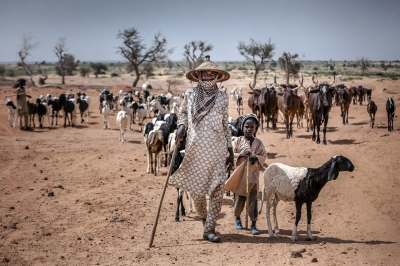Innovative tools for sustainable, low-carbon livestock investment

Millions of people in the Sahel depend on pastoral systems for their food and livelihoods, which is why developing the sector in an economically, socially and environmentally sustainable way is so vital.
The second phase of the World Bank-financed Regional Sahel Pastoralism Support project, known as PRAPS-2, is investing in more robust animal health systems. Building on the legacy of its predecessor, it is introducing innovations for healthier animals and ecosystems, more resilient livelihoods and greater social and economic inclusion, including more accessible technical and vocational training for women and young people from pastoral households. Around 13 million people in Burkina Faso, Chad, Mali, Mauritania, Niger and Senegal stand to benefit.
PRAPS-2 seeks to harmonize animal vaccination and disease surveillance activities. It also aims to strengthen veterinary services and rehabilitate critical infrastructure like veterinary units, border inspection posts, livestock markets and rest areas along routes used for trade and the seasonal movement of livestock. One of the project’s key activities involves testing approaches to sustainably increase cultivated fodder and strengthen capacity to measure feed availability using FAO’s improved feed balance methodology and guidelines.
When designing this second phase, a multidisciplinary team led by the Centre and including colleagues from FAO’s Animal Production and Health Division used innovative tools to provide evidence-based analysis for more sustainable, climate-sensitive investment. One such tool was LSIPT. Developed by FAO with the World Bank and CIRAD, LSIPT provides analysis on the benefits and costs of livestock investments. It can also be used to carry out livestock sector assessments and master plans. The team applied the FAO-developed GLEAM-i, an open, free online tool that estimates greenhouse gas emissions across the life cycle of animal products. GLEAM-i can be used for low-carbon and resilient livestock development and to improve economic and financial analyses by estimating environmental externalities.
